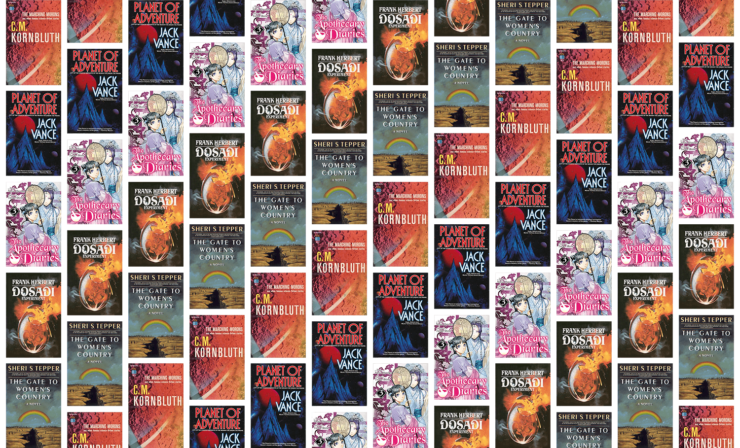It might be comforting to tell oneself that eugenics—the conviction that one can breed one’s way to better humans by encouraging the fitter ones to have more children and those considered to be less fit to have fewer—was a horrible fad that went out of fashion after the unpleasantness in the mid-20th century. Of course, that’s not true. State sanctioned sterilization of those deemed inferior continues to the modern day.
It’s not surprising that science fiction authors have not always resisted the lure of eugenics as a plot starter. Why not apply to humans the same techniques that transformed the humble wolf into the majestic chihuahua? Here are five stories that engage with the notion in different ways.
“The Marching Morons” by Cyril M. Kornbluth (1951)
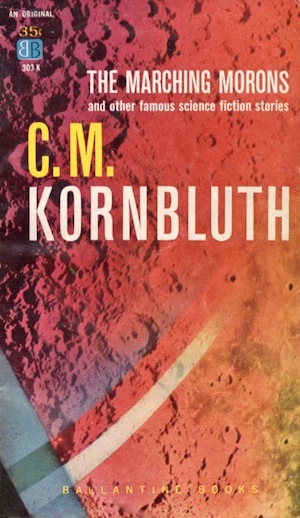
“The Marching Morons” is a cautionary tale told with the gentle humanism one would expect from Kornbluth. In Kornbluth’s world of tomorrow, the lower orders—fertile nincompoops beyond education’s power to improve—see no reason to limit their birthrate, while bright people find no end of reasons to prudently limit theirs. Result: a planet dominated by idiots, kept alive by the unceasing labour of the brilliant minority.
The situation is unsustainable. However, the elite can think of no solution that they would be able and willing to put into action. Their ultimate recourse is to turn to a man of the past unburdened by the concerns that hinder the geniuses. His simple solution? Why, the ultimate destination of many eugenic programs: mass murder on a global scale. However, his reward for cutting the Gordian knot is not all that he might have wished.
The Dosadi Experiment by Frank Herbert (1977)
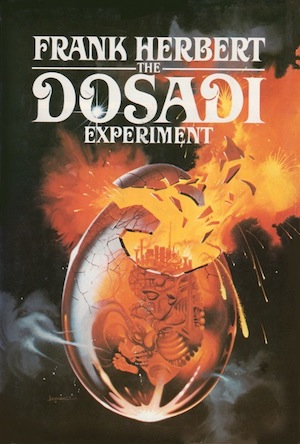
The galaxy-spanning ConSentiency is held together by the Calebans’ “jumpdoors,” through which any two destinations, no matter how far apart, are separated by a mere stride. Bold visionaries saw an intriguing application: divert small numbers of travellers to an isolated, inhospitable world, where a bitter struggle for survival would subject the population to an edifying selective process. What marvels would result?
There is, of course, the minor detail that plagues so many visionary research programs, which is that the project is almost certainly extremely illegal, what with the kidnapping and deaths. The Dosadi Experiment is therefore known only to a few. The last thing the conspirators want is the attention of a Saboteur Extraordinary, those functionaries charged with kneecapping excessively exuberant government programs. Saboteur Extraordinary Jorj X. McKie’s curiosity regarding the Experiment is unwelcome. However, let him visit the Experiment if he pleases. It is, after all, a planet of no return.
The Planet of Adventure by Jack Vance (1968-1970)
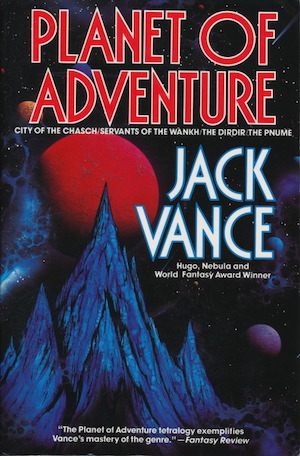
A 1973 omnibus assembled from City of the Chasch (1968), Servants of the Wankh (1969), The Dirdir (1969), and The Pnume (1970), the Planet of Adventure is dominated by four alien races. Thanks to the Dirdir, there are also humans, descendants of neolithic humans collected from the Earth in ages past. Humans could be useful slaves save for one minor detail. Just as each alien race is different from the others, so are humans displeasingly different from all of the aliens. What to do?
The answer is “selective breeding applied over a long time.” If, for example, one desires a good Wankh, but all one has is humans, all one need to encourage—force, really—humans with Wankh-like characteristics to have children and those who lack them to go without children. By the time explorer Adam Reith is marooned on the planet, the four different breeding programs have had their intended effect: each alien species has its associated breed of humanity: Chaschmen, Dirdirmen, Wankhmen, and Pnumekin.
The Gate to Women’s Country by Sheri S. Tepper (1988)
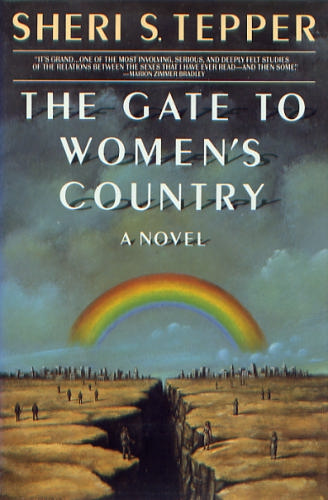
The matriarchal, ecotopian Women’s Country is one way to arrange society. The Holylanders chose a different way. As protagonist Stavia discovers, the Holylander solution places a lot of power in the hands of a few men, with most men being merely brutalized subordinates. All Holyland women are slaves. From the perspective of a woman, the Holylander way is extremely unattractive.
However, the Holylanders are not alone in breeding for traits they prefer. Those who guide the Women’s Country are engaged in a long-term covert eugenics program aimed at ridding the world of such perceived ills as violence and homosexuality. Success depends on behavior being both biologically determined and capable of being “corrected” through science. As it happens, the author certainly seems convinced that it is, which is terribly convenient for her characters.
The Apothecary’s Diary, Volume Three by Natsu Hyuuga
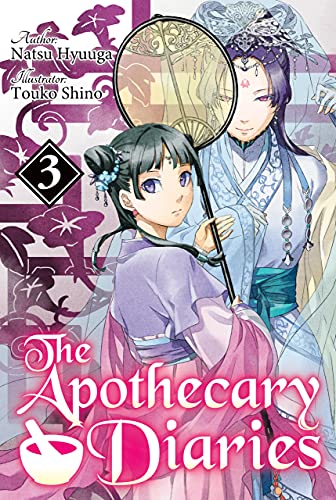
Kidnapped and sold as a servant girl to the rear palace—the harem of the Emperor of Li—Maomao intended to keep a low profile until her contract expired and she could return to her foster-father. Observant, a highly trained apothecary, and incapable of keeping her mouth shut, Maomao instead became an unofficial rear palace detective. Thus far, she has saved lives and revealed killers, at the cost of becoming increasingly entangled in court politics.
In the third novel in the series, she stumbles across a curious example of selective breeding. The Imperial lineage happens to have a minor inheritable trait, one that is deleterious (or at least, mildly annoying) in most circumstances. However, to ensure that this lineage remains on the throne, emperors must pass a test that only people with that specific deficiency can pass. What is in most circumstances an impairment becomes a strength, almost as though the advantageousness or deleteriousness of traits depends on context. See: fitness landscape.
***
There are lots and lots and lots and lots of stories that engage with the topic of eugenics (sometimes in favour—which is always chilling—and sometimes as cautionary tales). Perhaps you have your own notable examples in mind. Feel free to mention them in comments below.
In the words of Wikipedia editor TexasAndroid, prolific book reviewer and perennial Darwin Award nominee James Davis Nicoll is of “questionable notability.” His work has appeared in Publishers Weekly and Romantic Times as well as on his own websites, James Nicoll Reviews and the Aurora finalist Young People Read Old SFF (where he is assisted by editor Karen Lofstrom and web person Adrienne L. Travis). He is a four-time finalist for the Best Fan Writer Hugo Award, is eligible to be nominated again this year, and is surprisingly flammable.










